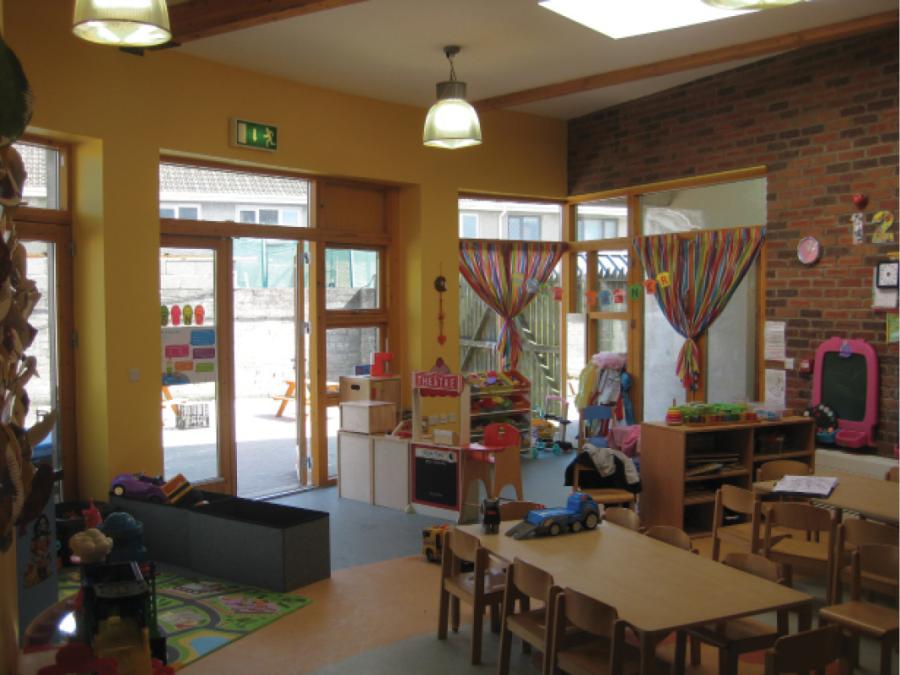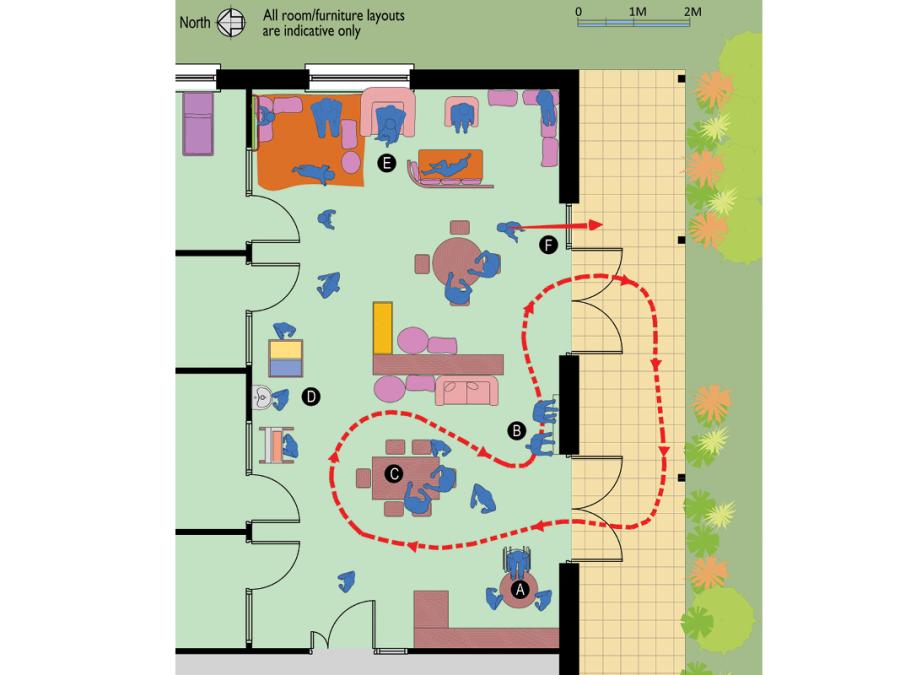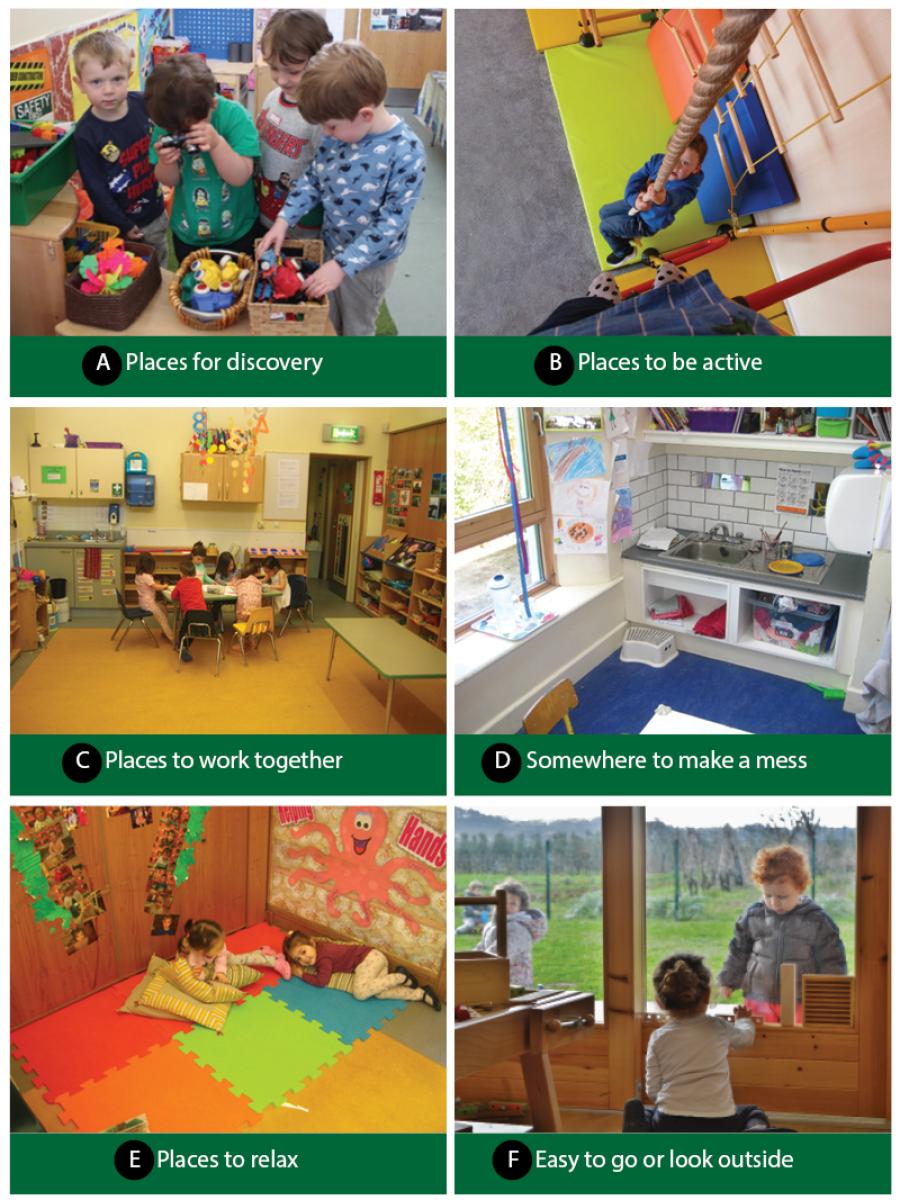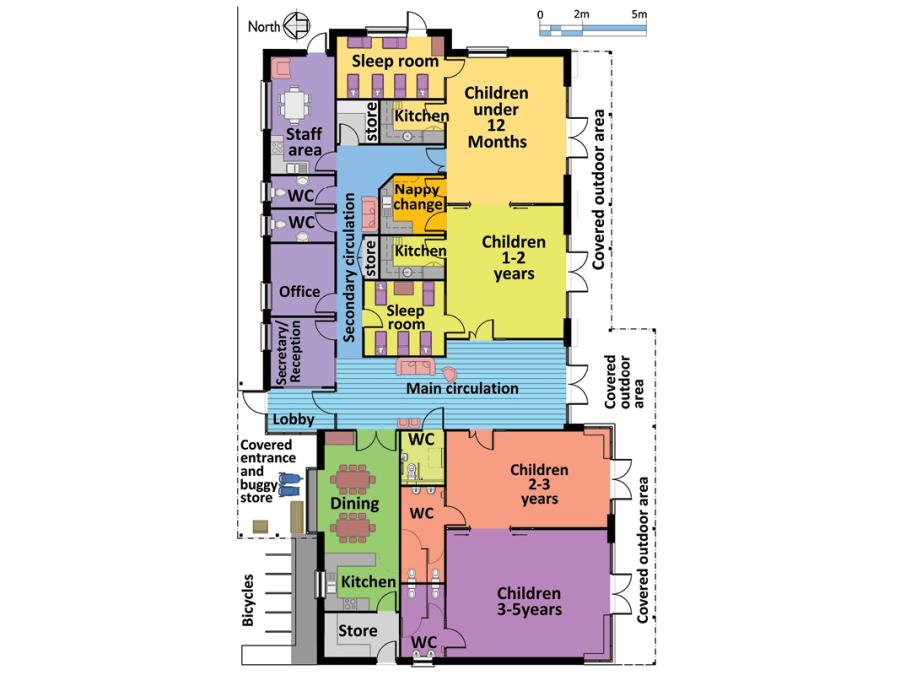Overarching features: design for all children
Design considerations and awareness
There are common design features important for all children regardless of their age, size, or ability. These include:
- High levels of natural light, with blinds to avoid glare.
- Good views to the outside.
- Internal finishes, colours and materials that achieve a calm and balanced sensory environment with appropriate stimulation and interest that avoids sensory overload.
- Shelving, cupboards, cabinets, and other storage units to organize toys and keep the space tidy and calm.
Rooms should be spacious and flexible to allow various layouts for a range of activities, toys and play materials. Different areas within the room should provide diverse experiences and provide places for children to run, play, rest, be with others, or be alone.
Spaces should be large enough to provide adequate circulation for children with sensory, physical or cognitive difficulties. This supports children with sensory processing difficulties who may need additional personal space where they can withdraw from activities. Additional circulation space will also benefit specialist staff and those using bulky equipment. Direct access to outdoor space is important and should be provided to allow free movement between inside and outside. Double or sliding doors will allow a space to be opened up to create connections with nature and the outside world.

16. Northside Family Resource Centre, Ballynanty, Limerick City
Northside Family Resource Centre, Ballynanty, Limerick City.
Design features
- Direct access and views to the outdoor space.
- Good natural light including rooflights.

Technical sketch 3: Indicative plan of mixed age room showing key areas for all children
Various areas within a typical mixed age room that offer a range of activities, experiences, and levels of social engagement, from interactions with others to time alone (see next page for corresponding images).

See technical sketch 4 for the location of these spaces on an indicative floor plan.

Technical sketch 4: Indicative overall plan of setting showing various key rooms
Universal Design Guidance
- High levels of natural light and the provision of low-level skills or floor-length windows to maximise views to the outside and support visual development (a sill of 300mm provides a nice place for a small child to sit).
- Toilet facilities attached to each room and easily accessed from the main activity space.
- Sufficient storage space within the room.
- Room flexibility through moveable elements to define different spaces.
- Space that facilitates good levels of staff supervision.
- Child level shelving and storage units. It is important that there are sufficient wall areas with load bearing and fixing capacity for wall mounted shelves.
- Direct access to outdoor spaces.
- Ground floor accommodation allows safe, level, easy access to the outdoors, preferably reached from indoor play areas.
- Children in ELC settings often eat their meals in the main play area. Some children, for instance those with sensory processing difficulties, may require additional space or may need to be a slight distance from the smell of food or the noise associated with mealtimes.
- Signage, vision panels and door handles (where appropriate) need to be low enough for young children to reach.
- Where ramps are required they should have very shallow gradients (max 1:20) to suit young children using wheelchairs or mobility aids.
- Consider how sensory spaces or soft play spaces can be used for all children including those with physical, sensory or cognitive difficulties.
- If possible, an additional quiet room or semi-enclosed space for support or therapy would be beneficial to many children.
- Storage for mobility equipment such as buggies, strollers and wheelchairs.
- Battery charging for wheelchairs.




